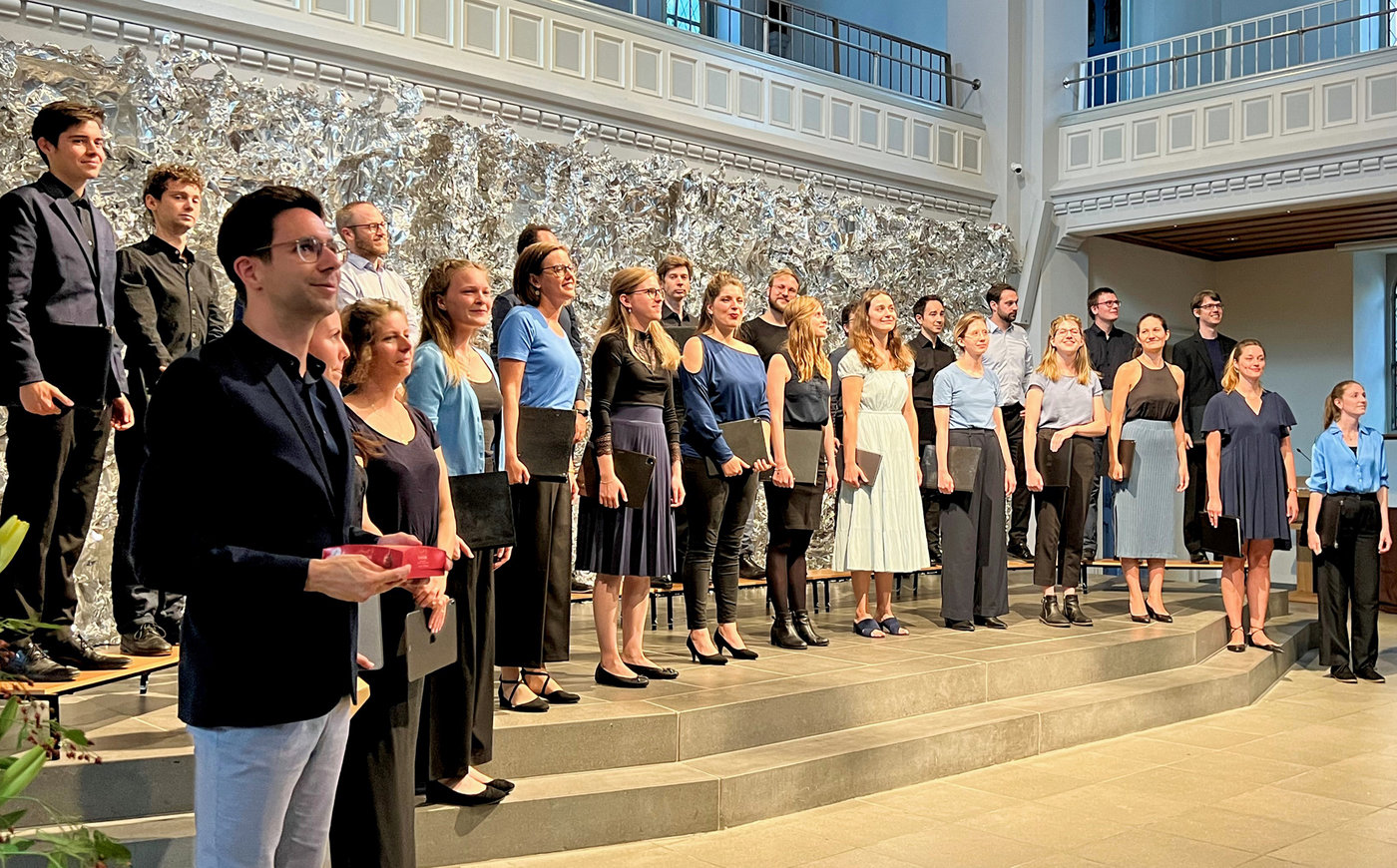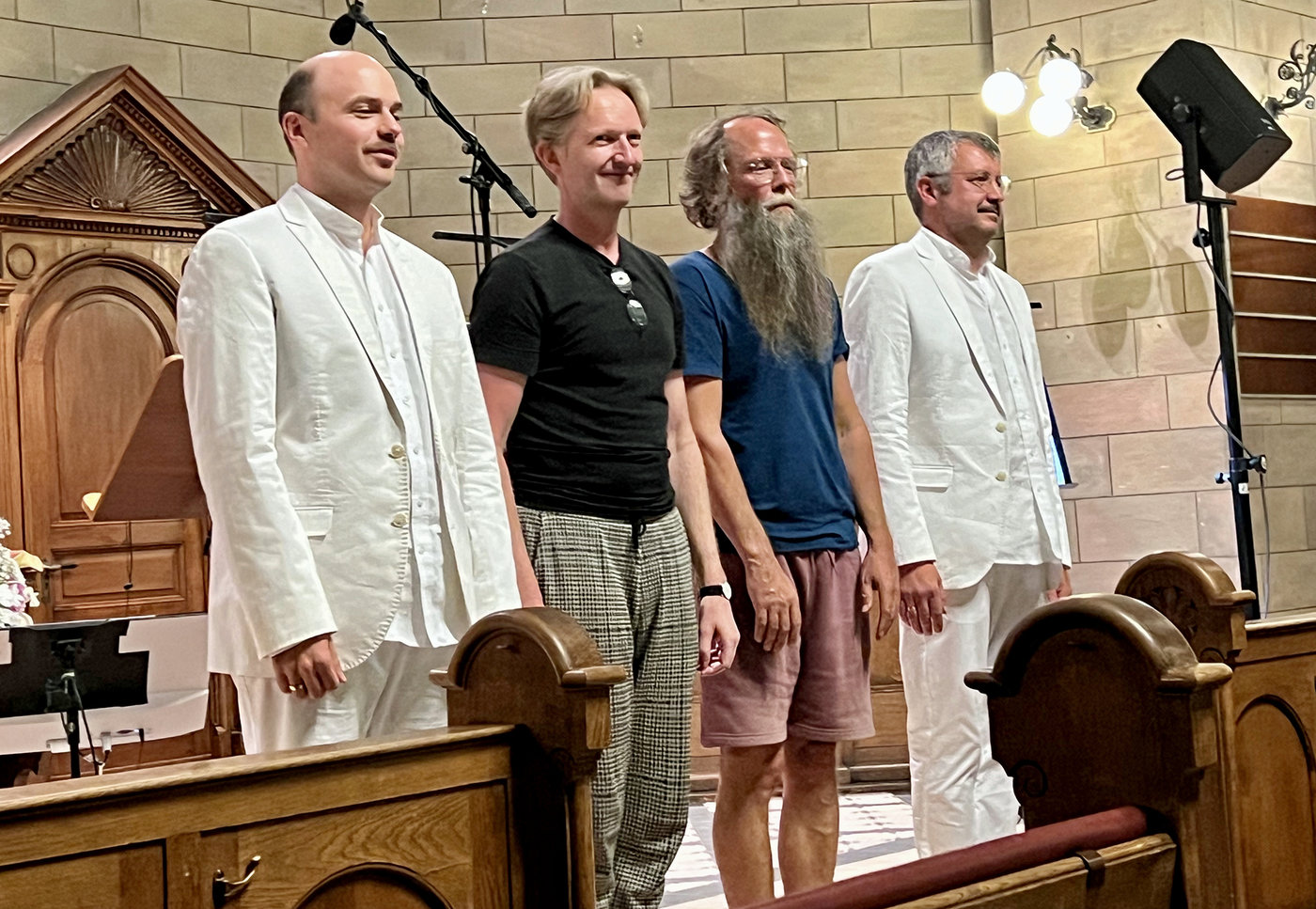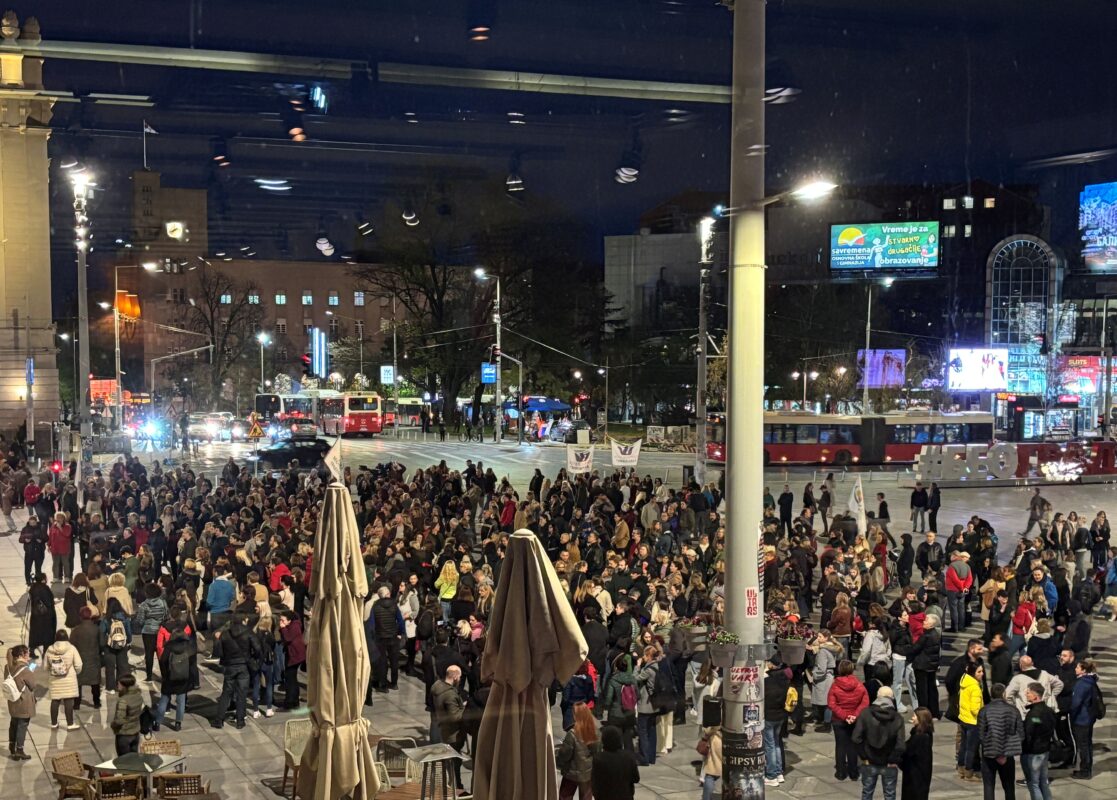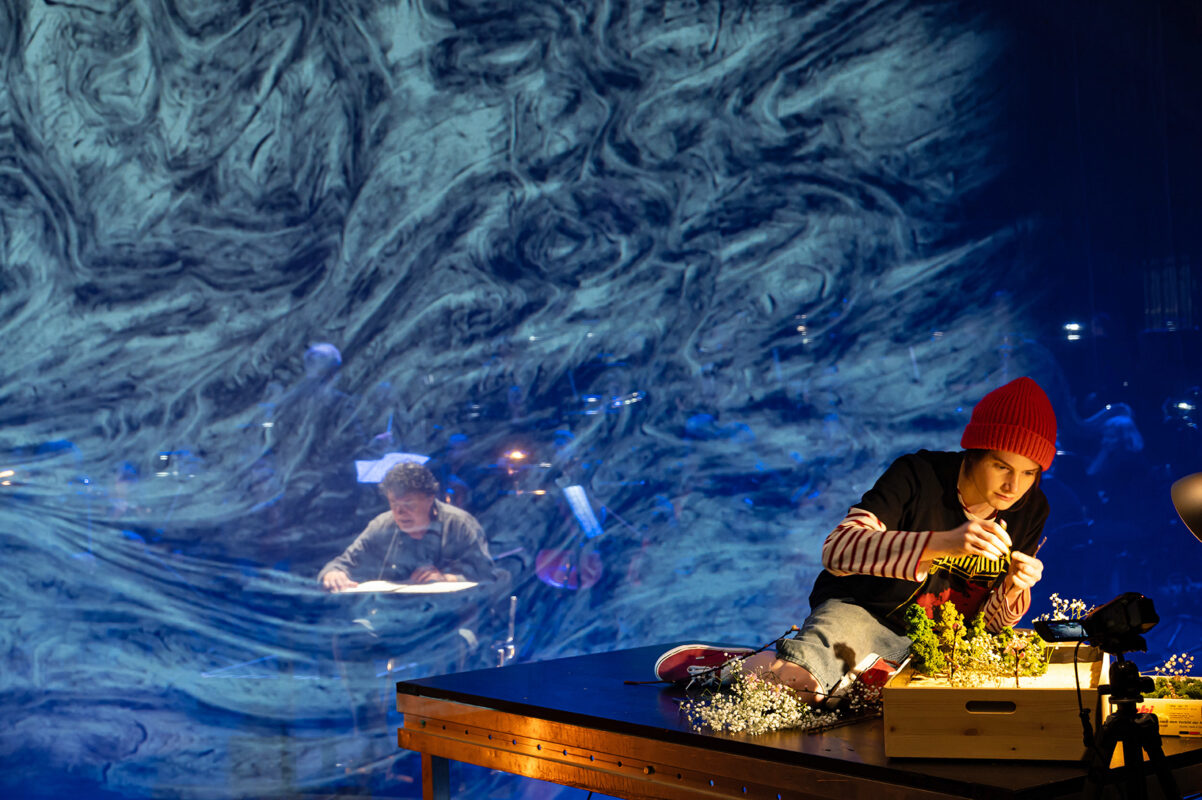Early music for today's audience
Renaissance music confronted with the present: The Forum Alte Musik Zürich experiments with new concert forms and brings a reencounter with a forgotten Swiss composer.

The program includes a forty-voice motet, but there are only two singers on stage who take turns. The forty voices of the nine-minute piece are not sung simultaneously, as would normally be the case, but one after the other. Each voice is recorded individually, mixed with the previous ones and played back into the hall via sixteen loudspeakers while one of the singers sings the next. Instead of nine minutes, it takes forty times nine minutes, i.e. six hours of pure music time and, with breaks, eight.
The motet is called Spem in alium and was probably performed in London in 1573 for the fortieth birthday of Queen Elizabeth I; the composer is Thomas Tallis, a celebrity in his time, the two singers are the countertenor Terry Wey, who effortlessly climbs the soprano register, and the bass-baritone Ulfried Staber; they are members of the Viennese vocal ensemble Cinquecento and perform in the Tallis project under the name "multiple voices".
How a monumental sound is created
The performance was a focal point of the fall festival of the Early Music Forum Zurich. Anyone who took the time to spend a Sunday listening in the spacious neo-renaissance church in Zurich-Enge witnessed a fascinating experiment. One experienced the slow development of a magnificent vocal work, voice by voice it grew into a monumental sound event. With its undulating web of voices, it provided a spatial experience that was not inferior to the original with eight sub-choirs distributed throughout the room. The reduction to just two singers, who were supported by a sensitive technique (Markus Wallner and Bernd Oliver Fröhlich), meant that the color-graded interplay of the polychoral music was omitted, but the purity and homogeneity of the sound made for a no less exciting listening experience.

The concerts of the Early Music Forum, led by baroque flutist Martina Joos and former radio editor Roland Wächter, which take place every year in March and September, always feature original programs and thus intelligently bring music from earlier eras to today's audiences. In addition to the hard core of the more than two hundred members of the association, they also attract other listeners whose interests extend beyond the standard classical repertoire. And what may surprise some people is that this music does not sound strange to our ears at all. In the sound world of a motet by Tallis or a song by John Dowland, it is easy to recognize the roots of our modern understanding of music.
Transhistorical concert practice
In addition to Tallis, this year's autumn festival focused on the "triumvirate" of William Byrd, John Dowland and Henry Purcell, the first two leading composers of the Elizabethan era, the third the towering figure of English Baroque music. All four were presented in the opening concert, in a mixture of sacred and secular works typical of the period. As a small window to our own time, the choral movement composed shortly before the Second World War was heard in between Advance, Democracy by Benjamin Britten, who is considered Purcell's legitimate heir in England. The performers were the Vokalensemble Zürich West under Marco Amherd. The young ensemble, a prizewinner in the elite category of the Swiss Choir Competition, showed what it owes its reputation with its infectious joy of music-making and weightless melodiousness.
The program idea of combining old and new was also the inspiration for the concert by three members of the Ensemble thélème. Songs from the 1600 published Second Booke of Songs by John Dowland alternated with solo numbers from the songbooks of John Cage. An unconventional idea that was enthusiastically received by the audience. Only the minute-long scenic interludes such as card laying and the tying of shoelaces were dull and boring - a reference to the chance operations that were often part of Cage's compositional business. There was a lack of feeling for a coherent concert dramaturgy. Transhistoricism, which was practiced to some extent here as well as with the Vokalensemble Zürich West, could, however, prove to be a promising model for the future.
Composer between the times
The second major focus of the festival was the performance of the Messa Solenne a 3 Cori by Franz Joseph Leonti Meyer von Schauensee (1720-1789) by the vocal ensemble larynx and the Capricornus Consort Basel under the direction of Jakob Pilgram. The now largely forgotten composer, the son of a Lucerne patrician with excellent connections in the ecclesiastical and social establishment of his time, was a councillor, clergyman, organist and bandmaster at the Lucerne Court Church and at one point a mercenary leader in Italy. A jack of all trades, he gave free rein to his compositional enthusiasm after completing his musical training in Milan. In his Mass of 1749, which lasts over two hours and has now been made newly accessible in a critical edition by a team of musicologists from Geneva, this is reflected in a wealth of sometimes original, sometimes half-baked ideas and an extremely generous use of time; the first two movements of the Mass alone last seventy minutes.
Sacred and secular-concertante elements stand side by side. Each mass movement is introduced by a short Sinfonia, a reference to the early symphonic practice of the Milan School. With blaring brass and a four-four time signature nailed to the tonic-dominant alternation, a festive, pompous tone prevails for the most part, even spilling over into the first Kyrie at the beginning. In keeping with the convention of the time, three offertories and - again with much fanfare - even a rudimentary instrumental battaglia are inserted between the mass movements. But the composer was also able to strike other notes. This is evident, for example, in the playful echo effects, in the darkly colored Crucifixus passage or in the fortissimo aria with three basses following the Sanctus. And two hundred and fifty years before the famous three tenors, Meyer von Schauensee already had a trio in this register.
For all its pomp, the mass breathes the spirit of the galant age, which is manifested in the simplified harmony and meter as well as a pleasing melody. The formulaic use of baroque figures and remnants of a harmonically starved basso continuo characterize the work as a late product of an outgoing era.
The outstanding feature of the mass, however, is its three-part texture. Meyer von Schauensee composed it for the canons of Beromünster Abbey, where there are three galleries, each with an organ. In Zurich's Fraumünster, this spatial arrangement was only used to a limited extent. The situation was presumably different in the monastery church in Muri, where the mass was performed for the second time a few days later. It was recorded by radio and television and will be broadcast on the upcoming Thursday, Oct. 5 at 8 p.m. on SRF 2 Kultur broadcast on television (with a selection of sentences) on December 24 at approx. 21.45h.








